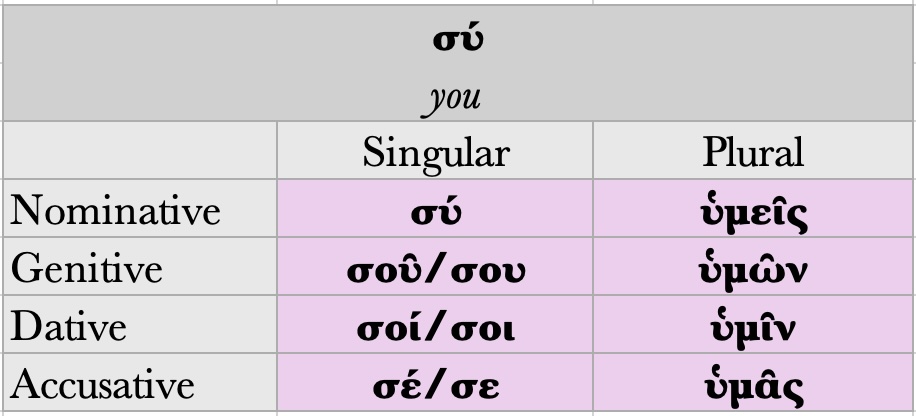26.4 As with the first person pronoun, the inflection of the second person pronoun includes TWO FORMS for the genitive, dative, and accusative singular. The two forms have the same meaning, though the unaccented forms are ENCLITIC and less emphatic.
The accent patterns, case endings, and stem changes are irregular and require memorization, as is the case with the second person pronoun in many languages (S 325, G 194).
The stem for this pronoun is συ-/σε-/σο– in the singular, ὑμε– in the plural. As with the first-person pronoun, the accent of non-enclitics is always on the ultima.
Remember that the NOMINATIVE forms of the first and second person pronouns are often redundant in a sentence, since normally the personal ending of the verb tells you the subject. When they appear, they often add emphasis or are shorthand for a complete statement:
- ἐγὼ ἐθέλω μένειν. καὶ σύ;
- Well, I want to stay. And you?


